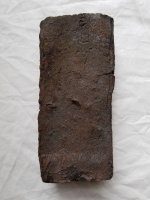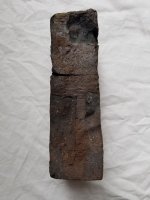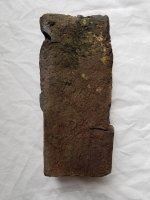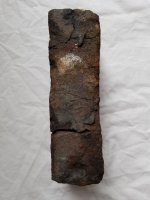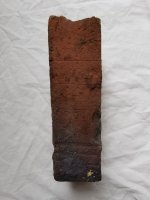itzyoboyandrew
Sr. Member
- May 13, 2015
- 492
- 422
- Primary Interest:
- All Treasure Hunting
So bit of background for those who are interested in the history of bricks. These are a very desirable brick in the coastal South Carolina/Georgia area. They are known as Savannah Greys. In good shape, they go for around 5-6$ a brick. These bricks I believe were made on the hermitage plantation starting in the very early 1800s. in the 1830s a big fire happened in Savannah, GA, and these bricks were used all throughout the city in repairs. The plantation first started off making rice, but the ground was horrible for rice production but the location had a special and unique to that spot type of clay perfect for brick making. These bricks were made/produced by slaves, although there is speculation that there might have been some white overseers helping production. The handprints form sometimes when the clay didn't dry enough and the slaves were either flipping them over or in this case, leaning on them(?) You can find these all throughout charleston, and in savannah. Archeologists occasionally find them like this in a single brick by itself on digs.
How did I find it? Over a year ago I was probing and found a savannah grey brick-lined well (only the top 2-3feet of it were lined, however.) In which I have been slowly digging it out, it gets really hot 8 feet underground in the Georgia summers, not a lot of breathing area... digging a well is a lot of work. But anyways, the well when they filled in, I am assuming they caved in the topsides because the well has a ton of bricks in it. Most of them are just halves, but I am getting a few full bricks out of it. A couple of months ago I found the better, more obvious example of the handprint brick. probably one of the cooler finds I have found in a while, especially from the well. Today, I decided to check over the bricks I tossed out again and found the second one.
I don't really know if these are worth anything, but I do know I didn't find any for sale (maybe no demand?) but the only way to really get one is to find out buried out in the ground, or knock down a historic building and take one from the rubble. Regardless of the value, I really like having them in my collection.
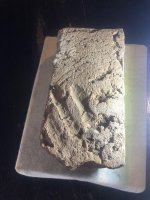
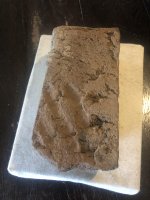
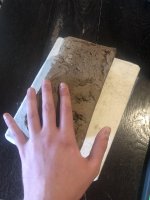
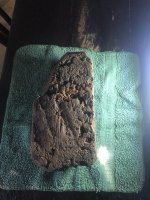
Some of these pictures have a light next to them to help bring it out. Its interesting both bricks have the exact same hand position.
How did I find it? Over a year ago I was probing and found a savannah grey brick-lined well (only the top 2-3feet of it were lined, however.) In which I have been slowly digging it out, it gets really hot 8 feet underground in the Georgia summers, not a lot of breathing area... digging a well is a lot of work. But anyways, the well when they filled in, I am assuming they caved in the topsides because the well has a ton of bricks in it. Most of them are just halves, but I am getting a few full bricks out of it. A couple of months ago I found the better, more obvious example of the handprint brick. probably one of the cooler finds I have found in a while, especially from the well. Today, I decided to check over the bricks I tossed out again and found the second one.
I don't really know if these are worth anything, but I do know I didn't find any for sale (maybe no demand?) but the only way to really get one is to find out buried out in the ground, or knock down a historic building and take one from the rubble. Regardless of the value, I really like having them in my collection.




Some of these pictures have a light next to them to help bring it out. Its interesting both bricks have the exact same hand position.
Amazon Forum Fav 👍
Upvote
26







